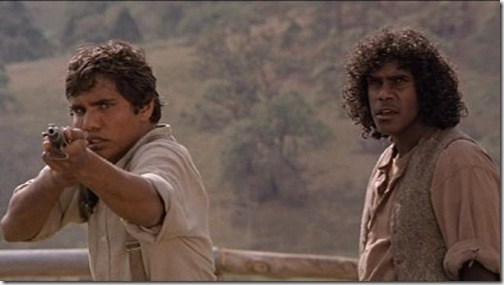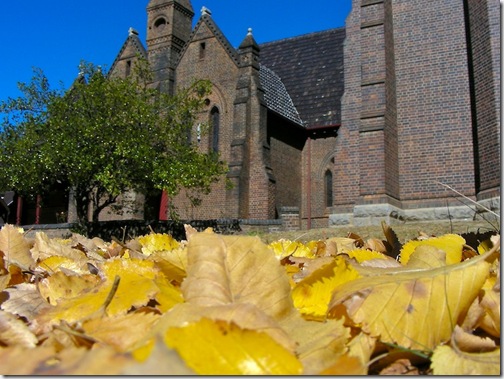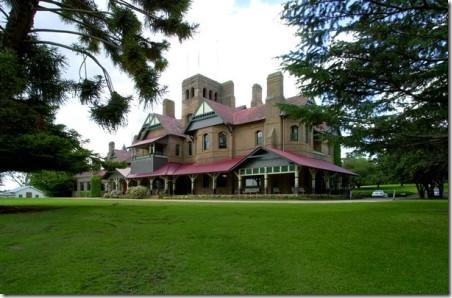Over on my personal blog in Lorenzo and the economic complexity of traditional Aboriginal life I posed and then answered some questions on the economic complexity of traditional Aboriginal life. In doing so, I didn't try to provide evidence, I just wanted to get them down. I hope to provide that later.
Discussions on the history and historiography of Australia's New England
Thursday, January 31, 2013
Wednesday, January 30, 2013
History Revisited - how a town's fire brigade was born
On the night of Monday 14 March 1887, Armidale residents were wakened by the sound of the town clock bell being continually rung to sound the alarm. What the Express was to describe as “The Great Fire” had broken out and was threatening to destroy a significant section of the northern side of Beardy Street.
By the time it was finally put out, five buildings had been destroyed with adjacent buildings damaged.
Armidale residents had had enough. A public meeting was held on 22 March to consider the formation of a town volunteer brigade. The question of a possible water supply was much discussed, including the erection of a reservoir on Goal Hill (later the Teacher’s College) where the forces of gravity might be used to feed water to the town center. A committee was formed to inquire into the provisions of the Fire Brigade Act of 1884. The committee was also charged with investigating the water supply question. By the end of the year, driven partly by local insurance company representatives, a Fire Brigade Board had been formed.
Further action was slow. Then early in the morning of Monday 11 February 1896, another major blaze broke out in Beardy Street. Four buildings were destroyed, including the Court House hotel located where the Imperial now is.
Desperate action was required to save the Post and Telegraph Office on the other side of Faulkner Street since the wood roof shingles had started to smolder under the impact of embers drifting across the street. Volunteers armed with wet blankets climbed onto the roof and managed to smother the incipient fires.
Another public meeting was called. This time a brigade was formed, an action celebrated in September when a gala day saw the christening of the new fire engine and the first procession and public drill of the newly formed brigade in their smart and serviceable uniforms,
It was quite a day. From their headquarters at the gas works, the brigade accompanied their horse drawn engine down Beardy Street to Tattersall’s Hotel where they thrilled the crowd by scaling nearby buildings. The Armidale brigade was now launched.
Note to readers: This post appeared as a column in the Armidale Express Extra on 23 January 2013. I am repeating the columns here with a lag because the Express columns are not on line outside subscription. You can see all the Belshaw World and History Revisited columns by clicking here for 2009, here for 2010, here for 2011, here for 2012, here for 2013
Wednesday, January 23, 2013
History Revisited - 'Blacksmith Country" lit up on the silver screen
I wonder how many Armidale people watched the repeat of the Fred Schepisi film The Chant of Jimmy Blacksmith (1978) on NITV? I also wonder how many know that this was a quintes sentially New England film?
sentially New England film?
Those who watched will certainly recognise some of the landscape in the film. To begin with, the last part of the wild chase after Jimmy Governor (Jimmy Blacksmith in the film) and his brother Joe took place across New England.
In the heat of the manhunt for Malcolm Naden, the Sydney media started calling the country around Nowendoc and the Upper Manning and Hastings Rivers Thunderbolt country. They would have been better off calling it Governor or Blacksmith country. Like Malcolm Naden, Jimmy and Joe were Aboriginal. Like Malcolm Naden, they knew the bush and effectively taunted the authorities. Like Malcom Naden, they became the stuff of legend.
Their journey was shorter, just fourteen weeks from the first murders to the death of Joe, the capture of Jimmy. Yet in that short time they became the dominant news figures in the colony, transfixing European society and its officials.
The film itself was based on a book by Thomas Keneally also called The Chant of Jimmy Blacksmith, a book that varied to some degree from the historical tale. Keneally had strong New England connections, for he was writer in resident at UNE and wrote two very specific New England books. The first was The Survivor (1969), a book linked to the sexual guilts of a senior academic. Anybody from Armidale will spot the local connections in the early part of the book. The second book was The Dutiful Daughter (1971), a story of UNE college life seen through the eyes of Damien Glover, the son of simple, coast dwelling parents.
The film was made mainly in Armidale, Dorrigo and their surrounds. Any modern Armidale resident would find the scenery including the Armidale Court House instantly familiar.
This is our world presented back to us through the miracle of film. It doesn’t matter that the story diverges from the historical record. It is a story after all. What matters is the instant familiarity of landscape that sends a shiver down the spine. This is our world, and we know it.
Just as with the earlier Captain Thunderbolt, the arrival of the film crew created great excitement. Locals lined up to be extras. Just as with Captain Thunderbolt, the world premiere was held at Armidale’s Capitol Theatre.
The film was not a great success. For Fred Schepisi, the film's reception was a disillusioning experience and he left Australia soon after to work in Hollywood, not returning for ten years. For we locals, the film is part of our history.
Note to readers: This post appeared as a column in the Armidale Express Extra on 16 January 2013. I am repeating the columns here with a lag because the Express columns are not on line outside subscription. You can see all the Belshaw World and History Revisited columns by clicking here for 2009, here for 2010, here for 2011, here for 2012, here for 2013
Friday, January 18, 2013
New evidence on the Settling of Australia – the Indian connection
There has been a recurring view in Australia that the Aborigines were a changeless people living in a changeless land. We now know that that view was incorrect on both counts. Aboriginal life did change over the millennia of Aboriginal occupation of the continent, while the land itself changed many times as climate changed and as the Aborigines themselves modified the land.
In all the discussion, the first settling of Australia has always been a question of interest to Australian prehistorians and anthropologists. When did the Aborigines first arrive in Australia, where did they come from and by what route? A second question of interest has been the issue of later settlement: did the original settlers and their descendants continue in unchallenged occupation of the land or were there new arrivals that challenged or at least mixed with the local population?
Anthropological, archaeological and ethnographic evidence all indicated some changes in the physical appearance of the Aboriginal population across time and space. Did those changes reflect new arrivals or were they within the range of normal physical adaptation to different environment over the millennia?
These questions are of both academic and political interest, for they play into the complicated debates surrounding Aboriginal history and associated discussion of rights of and treatment of Australia’s Aboriginal peoples.
New dating techniques have progressively pushed back the date of first arrival. It now appears that the Aborigines probably arrived in this country between 50,000 and 60,000 years ago during the Pleistocene period. Older sites may still be found, although the very earliest sites may lie below the sea; sea levels were then around 100 meters lower than the present levels.
In terms of route, two possible routes were postulated, southern and northern. The southern route went via what is now Indonesia where water distances were the shortest. The northern route went via what is now the Philippines through New Guinea. Water distances were much longer, but the prevailing winds may have assisted southern movement.
In 2002, a group of researchers published a paper in Current Biology.[1] This concluded that there was tight clustering between elements of the Y chromosome among the Aborigines studied from Northern Australia and people living in Southern India and Sri Lanka. This was evidence of an Indian connection and a southern route. However, there was a further feature.
Using the dating techniques developed for estimating when gene streams diverged, they concluded that the results strongly suggested that there had been an influx of Indian genes during the much later Holocene period. They also noted that the timing coincided with a period of significant change among Australia’s Aboriginal peoples.
Around 5,000 years ago, the archaeological evidence suggests the beginning of a process of significant change in Aboriginal life, a process described by Harry Lourandos as intensification. I will deal with the intensification debate in another post. For the present, populations increased and there were significant changes in Aboriginal technology.
In 2009, a group of Indian researchers published a paper in BMC Evolutionary Biology that provided a different perspective on the question of connections between the Australian Aborigines and the Indian sub-continent.[2] Using mtDNA sequencing, they concluded that there were genetic links between certain Indian tribal groups and the Australian Aborigines, but that the divergence had occurred between 50 and 60,000 years ago. To their mind, this provided conclusive evidence that the original Australian Aborigines and those living in Papua and New Guinea had followed the southern route via South Asia in first settling Australia.
This year, study led by researchers of the Max Planck Institute for Evolutionary Anthropology in Leipzig, Germany presented new results, again based on DNA evidence.[3] found evidence of substantial gene flow between Indian populations and Australia about 4,000 years ago. In addition, the researchers found a common origin for Australian, New Guinean and the southern Philippine negrito Mamanwa populations. The researchers concluded that these populations followed an early southern migration route out of Africa, while other populations settled in the region only at a later date.
So what do we make of all this? On the surface, the evidence suggests that there were at least two migration flows, one via southern India at the time of first settlement and then a second one many years later. The Max Planck study also establishes an apparent common linkage between groups in Australia, New Guinea and the Southern Philippines. However, if as the Max Plank researchers conclude, they all followed the southern route, that suggests migration north from New Guinea into the Philippines against the winds.
We need further DNA analysis to resolve all this!
[1] Alan J Redd, June Roberts-Thomson, Tatiana Karafel, Michael Bamshad, Lynn B Jorde, J M Naidu, Bruce Walsh and Michael F Hammer, Gene Flow from the Indian Subcontinent to Australia: Evidence from the Y Chromosome, Current Biology, Vol 12, pp673-677, April 16, 202. Accessed on-line http://nitro.biosci.arizona.edu/zdownload/papers/CurrentBiology.pdf 18 January 2013
[2] Satish Kumar, Rajasekhara Reddy Ravuri, Padmaja Koneru1, BP Urade, BN Sarkar, A Chandrasekar and VR Rao, Reconstructing Indian-Australian phylogenetic link, BMC Evolutionary Biology, 9:173, accessed on-line 18 January 2013 http://www.biomedcentral.com/content/pdf/1471-2148-9-173.pdf
[3] Max Planck Institute for Evolutionary Anthropology, Gene flow from India to Australia about 4,000 years ago, accessed online 18 January 2013, http://www.mpg.de/6818105/Holocene-gene-flow_India-Australia
Wednesday, January 16, 2013
History Revisited - tragic end for early architect
Visitors comment on the beauty of many of Armidale’s buildings. They give the city a unique feel.
Behind that beauty lies the story of architects and architecture, the people and changing fashions that formed the city we love.
John Horbury Hunt was born in New Brunswick, Canada, in October 1838. He practiced first in Boston, emigrating to Australia in 1862 after the US Civil War led to the closure of the Boston practice in which he worked.
Initially Hunt worked for Edmund Blacket, another architect who had a considerable influence on New England’s built landscape, before establishing his own practice in 1869.
Hunt’s first great commission was the Newcastle Cathedral. From there, he went on to design many of the churches and great homes across Northern New South Wales. Many of those commissions came from the White family who acted as his sponsor and promoter.
In Armidale Hunt designed St Peter’s Cathedral, the Deanery, St Johns Theological College, the Armidale Hospital, Booloominbah and Trevenna. You can see from this list just how important Hunt was to the city we have today.
Hunt was a natural Victorian eccentric whose architectural views extended well beyond the conventional limits of the time. He had a deep understanding of the materials he used and of all building skills. This led him to experiment with different forms. The results are clear in the texture and special design features of  his Armidale buildings.
his Armidale buildings.
Hunt was not an easy man to deal with. Armidale historian Lionel Gilbert described him as small, mercurial, irascible, uncompromising, egotistical, aggressive, if with certain warmth.
Work dried up as the depression of the 1890s squeezed Sydney. Then in 1895 came the death of his wife Elizabeth.
Elizabeth was fourteen years older than him and had, I think, been the bedrock of his life. From there his decline was inexorable. There was no work, he saw his beloved Cranbrook cottage at Rose Bay seized and survived as best he could by selling his possessions.
By the time he died in 1902, Hunt was a pauper. His only assets were his spectacles, three gold rings, a silver pencil and eight shillings and threepence in cash. As I read the details of Hunt’s later life I found it profoundly sad that a man who gave us so much should end this way.
Now, looking back, we can see that Hunt's distinctive, radical architecture was twenty years in advance of his peers, some of it unequalled in the world at that time. We can also see that Hunt sowed the seeds of some aspects of modern architecture in Australia.
That’s a great legacy. Armidale gained enormously from Horbury Hunt, but so did Australia as a whole.
Note to readers: This post appeared as a column in the Armidale Express Extra on 9 January 2013. I am repeating the columns here with a lag because the Express columns are not on line outside subscription. You can see all the Belshaw World and History Revisited columns by clicking here for 2009, here for 2010, here for 2011, here for 2012 here for 2013
Wednesday, January 09, 2013
History Revisited - marching into town's heart
Francis Schaupp was an annoyed man. As Armidale’s Inspector of Nuisances, his job was to maintain public order. He took this role most seriously.
The city had long had a problem with larrikins, disobedient youths who congregated in the streets, drank, and created disorder.
The big snowstorm of August 1881 was the heaviest in memory. The larrikins had pelted pedestrians, horse riders and carriage occupants with snowballs. Their unerring accuracy had created outrage at the failure of the police to protect the streets from such disorderly behaviour.
By 1886 the problem had eased. The streets seemed secure from public nuisance. However, Inspector Schaupp now had a new problem, one that concerned him greatly. A new religious organisation had arrived, one that threatened the quite order of Armidale’s streets.
Funded in 1865 by William and Catherine Booth as the North London Christian Mission, the Salvation Army had developed on military lines with its own uniforms, colours and hymns, often with words set to popular and folkloric tunes sung in the pubs. Booth became the General, his minister’s officers, while other members became soldiers.
The arrival of the Salvation Army in Armidale created consternation. The marching in the streets, the band, the public presence of women in uniform, were an affront to civic decency. Inspector Schaupp single-handedly set out to stop them.
To the larrikins, by contrast, the Salvation Army was an opportunity, a break from boredom. Both the “Hallelujah Lasses” in their scarlet uniforms and the good Inspector in the top hat he always wore were targets. At one meeting, the flour bombs crushed the Inspector’s top hat and glued it to his head!
In this case, the Inspector had met his match. The Army was quickly accepted into the structure of Armidale life.
In 1891, General Booth himself visited Armidale and was accorded a massive welcome fit, in historian John Ferrier’s words, for an Empire hero. Much had changed in just five years.
Growing up in Armidale, the Sallies still marched and played.
The corner just across the road from our house seemed to be a favourite place. There each year at Christmas, the band would form up on the footpath and play just as it had done so many years before.
To me as a child, the Salvation Army with its band and uniforms seemed strange, different, part of the intrinsic colour of local life.
The world changes, of course. As it does, the rhythm of life changes. Part of the role of the historian is to record those changes and represent them so that they are not lost but reinterpreted in the light of current needs and attitudes.
The Sallies today have adjusted to change. The old is still there, but now they work in somewhat different ways, they present differently.
But just speaking personally, I have very fond memories of the old Sallies and the role they played.
Note to readers: This post appeared as a column in the Armidale Express Extra on 2 January 2013. I am repeating the columns here with a lag because the Express columns are not on line outside subscription. You can see all the columns by clicking here for 2013.










